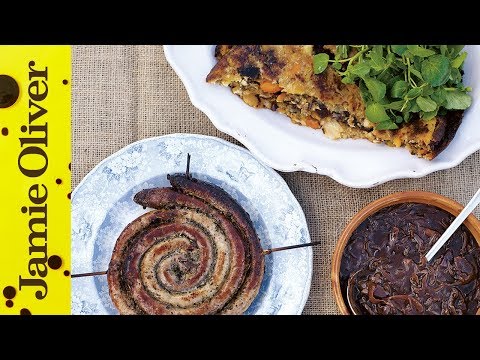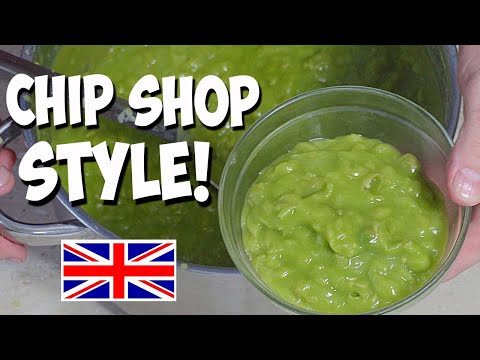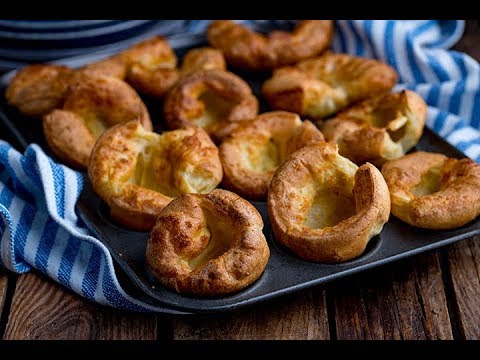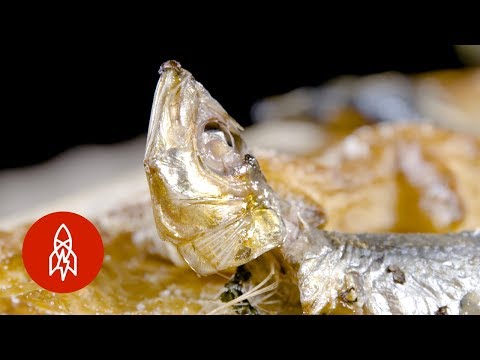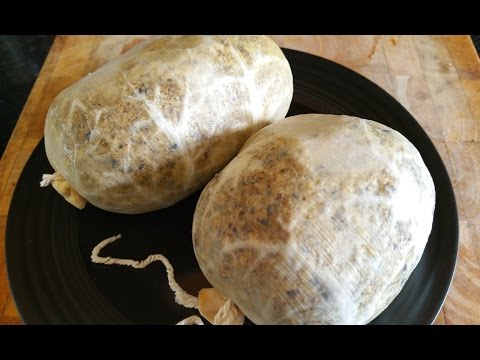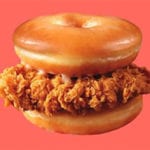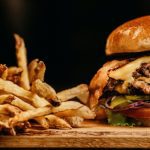“One cannot trust people whose cuisine is so bad,” French President Jacques Chirac was overheard snarkily commenting to Vladimir Putin in 2005. “The only thing they have ever done for European agriculture is mad cow disease.” Ironically, less than a decade later, in the 2012 San Pellegrino World’s Best Restaurants awards, Britain had three eateries place in the top 15, one more than France. Other misunderstandings regarding British cuisine are often purely linguistic… bangers are sausages, and so are toads. Crisps are chips, and chips are actually thick-cut fries. It also helps to know that puddings are sometimes savory, and even actual desserts seldom have the texture or flavor of what other nationalities expect a dessert to have. In England, you’ll quickly realize that a mincemeat pie does not actually contain any meat at all. Here are ten items you can find on a British menu that might be challenging to the palette and sometimes to the eyes.
10 Bubble & Squeak
Bubble and squeak is a cute name for possibly one of the most unattractive but oh-so-tasty British dishes. It’s a sauteed concoction containing leftover vegetables, usually mashed potatoes, along with carrots, onions, cabbage, shredded leftover meat, and pretty much whatever else is on hand. Some folks add Brussel sprouts, but that’s a big no from me. It’s commonly served as part of a full English breakfast. Watch this video on YouTube In Scotland, it’s called rumpledethumps, but ask for colcannon in Ireland. The name allegedly was derived from the noise that a wooden spoon makes when clattering about cooking the dish. So it’s probably not all that surprising that a dictionary published in 1785 defined bubble and squeak as “beef and cabbage fried together. It is so called from its bubbling up and squeaking while over the fire.” Despite resembling a frisbee that’s been mangled by a lawnmower, British celebrity chef, Jamie Oliver, describes it as “one of our great British recipes.”[1]
9 Scotch Egg
A Scotch egg is a hard-boiled egg wrapped in sausage, dredged in breadcrumbs, then deep-fried. It can be eaten hot or cold, and for some unfathomable reason, it is a popular food item to take on picnics. In Dec 2020, chef Jon Fell made a Scotch egg that weighed a whopping 9.5 kilograms (21 pounds) and measuring53 centimeters (21 inches) across. He used an ostrich egg, 3.2 kilograms (7 pounds) of sausage, 2.3 liters (4 pints) of milk, and five loaves of bread in its creation. I confess that I have never been a fan of eggs of any type and in any form. Hard-boiled eggs are quite awful due to the sulfurous smell and the odd, somewhat rubbery texture. The addition of sausage and bread crumbs just makes it worse, in my opinion. I’ll pass, thanks.[2]
8 Black Pudding
Make no mistake, this is most definitely not a pudding. It’s actually a blood sausage, which is usually fried, grilled, or sometimes even boiled. Historically served with a full English breakfast, many claim it is a great cure for a hangover. Salty and savory, flavored packed with fat and spices, this congealed blood and oats brew is surprisingly tasty. Watch this video on YouTube What is a full English breakfast? Traditionally, this coronary-inducing plateful includes fried sausages, fried bacon, fried eggs, fried mushrooms, baked beans, grilled tomatoes, hash browns, and toast with lashings of butter. Devon-based butcher, Chris McCabe, says he owes his life to a black pudding when he accidentally shut himself in a walk-in freezer in 2017. The door release button was frozen over, and working alone, he was in danger of freezing to death within the hour. He grabbed a 1.5-kilogram (3.3-pound) frozen black pudding (made by HM Sheridan of Ballater, Aberdeenshire, who holds a royal warrant for supplying meat to Queen Elizabeth II) and bashed the iced-up button until he was able to exit the freezer. Upon hearing of the near escape from an icy fate when visiting Sheridan’s, Prince Charles reportedly commented, “My word, it’s like a truncheon, isn’t it? Will you please give Mr. McCabe my best wishes.”[3]
7 Chip Butty
This is what many Brits think is the ultimate in comfort food—a sandwich made with french fries and little else. A chip butty is just two pieces of soft white bread spread with butter and filled with a generous handful of thick-cut chips (fries). An alternate version involves using baked or fried fish fingers in place of the chips. Unfortunately, the bread gets soggy from the grease, and the addition of ketchup makes matters even worse. Either version is a somewhat dodgy culinary creation, in my estimation, but my kids and my husband would all strongly disagree. A British statistician has come up with what he considers to be the ideal ratios needed to make the perfect chip butty. Dr. James Hind claims a well-made butty has 12 thick-cut chips, two 40-gram (1.4-ounce) pieces of medium-sliced white bread, tomato sauce or ketchup, and butter. Absolutely no mayo or margarine. He based his findings on the preferences of 2,000 Brits who were surveyed by a supermarket chain. “The most important thing is to have the weight of chips at least three-quarters of the weight of the bread plus ketchup,” explained Dr. Hind.[4]
6 Mushy Peas
This is a well-known accompaniment to traditional fish and chips. Mushy peas are exactly what they sound like, as they are cooked peas that are seasoned with salt and pepper, then mashed until they are of a similar texture to that of refried beans. Add even more salt and pepper or even malt vinegar if desired, then heap up on a piece of beer-battered fish or on a slice of buttered, toasted bread. This is not exactly the most attractive dish, looking as though it’s been thoroughly chewed and then regurgitated onto the plate, but if made right, it’s kind of okay. In May 2022, a Staffordshire woman—Wendy Mountford—was in court, facing assault charges after she attacked a fish and chip shop owner, pelting her with mushy peas and hitting her in the face with a plate. Apparently, Mountford was outraged that some of the food items were allegedly delivered cold. The assault victim described, “I saw later that there were peas down my back. I turned around to ask her what she was doing, but as I turned, I saw this plate hurtle at my face, and I just felt this massive pain.” Mushy pea rage is apparently a thing nowadays?[5]
5 Jellied Eels
Take some eels, chop them up, boil them in a slightly spiced stock, and then set them aside until they congeal into some sort of vile, lumpy, slimy, gooey jelly. Basically, imagine the biggest, slimiest, downright nastiest slug you’ve ever seen, then imagine that you are eating it. Or, as some have described, eating something that looks like a fish that has been eaten by another fish and tasting like what is left behind when a ghost sneezes. Watch this video on YouTube Apparently, sales of jellied eels spiked (albeit temporarily) when David Beckham was pictured in 2019 eating them at the pie and mash shop where he grew up. However, most folks would no doubt pass on these, but if you can get past the wholly unappetizing appearance, the flavor is only slightly salty and not overly fishy tasting. Surprisingly there are not a lot of bones to work around either. If you’re feeling brave, give it a try![6]
4 Mince Pies
Synonymous with Christmas, mince pies are a seasonal treat that is probably about as important to Brits as Santa Claus and a well-decked-out tree are in bringing out the right atmosphere during the holiday season. While they did contain actual meat once upon a time, the “mince” in these little pies is actually a tangy, overly sweet combination of mixed dried fruit and spices, often also containing chopped apple and citrus rind. Boozy versions can include a healthy splash of port, sherry, or rum. Watch this video on YouTube While not technically illegal per se, the story goes that in the mid-1600s, eating them was thought to be a sign of a secret celebration of Christmas, which had been strictly outlawed. Some claim that Oliver Cromwell was determined to crack down on gluttony in England and outlawed a number of different festive treats. Christmas and all the gastronomic goodies were formally reinstated in England in 1660 when King Charles II ascended to the throne. These days, they are strictly sweet mini pies in a shortcrust pastry (pie crust) which is always overly thick. The filling has a somewhat odd flavor profile, sickly sweet with a bit of a zingy tang, but they’re delicious served warm, accompanied by thick cream and hot custard. Yum![7]
3 Yorkshire Pudding
Don’t let the name and the fact that they are vaguely muffin-shaped fool you—this is no dessert. They are actually odd, puffy blobs made from eggs, milk, flour, and fat. As the name suggests, it originated in the Yorkshire region of northern England and, in the USA, some might know them as “popovers.” Watch this video on YouTube In May 2022, a luxury hotel in Leeds launched a menu dedicated entirely to Yorkshire puddings. The menu includes topping combinations of wild mushrooms, pearl onions, and smoked pancetta; black pudding and apple; and ox cheek and bone marrow mash. Each “pud” is served with a topping of the obligatory gravy. By themselves, however, they are bland and unappetizing, but they are an essential accompaniment to a traditional Sunday roast meal. They are at their best when made from a batter containing drippings from the roast beef or mutton pan and drowned in a rich gravy.[8]
2 Stargazy Pie
Don’t get me wrong, I love a good pie. One of my personal favorites is a TexMex-inspired combination of ground beef, cooked rice, and pinto beans, with a heavy-handed splash of Tabasco sauce thrown in for good measure. So good. So very good! Watch this video on YouTube By way of contrast, the Brits have the Stargazy Pie, something that even this pie-lover wouldn’t think of hooking into. Originating in Cornwall in southwest England, the main ingredient in stargazy pie is pilchards (sardines), along with potatoes and eggs in a pastry crust. The fish heads are left protruding from the crust “lid” of the pie, as though gazing at the stars, hence the name. The legendary tale goes that around 1600, a Cornish coastal town was besieged by a massive storm for many days, and none of the boats could go out to fish. The whole town was threatened with starvation when one brave soul, the delightfully named Tom Bawcock, went out in his boat and returned with a huge catch of pilchards. In celebration, they baked a huge fish pie in his honor.[9] I like fish; I love pies, but this is wrong on so many levels. This is a bit of a gastronomic nightmare.
1 Haggis
One of my favorite movies is the 1986 cult classic Highlander, where proud Scotsman Sean Connery plays Egyptian-come-Spanish immortal warrior Ramirez. When the Highlander explains to Ramirez that a haggis is a sheep’s stomach stuffed with meat and barley and that you eat it, a grossed-out Ramirez replies, “How revolting!” (Adding to the irony, the Highlander is played by French actor Christopher Lambert, but I digress.) I admittedly love haggis, Scotland’s national dish. Yes, it contains a finely chopped sheep’s heart, liver, and lungs, some random oats, barley, or other grains, and a whole lot of seasoning. It is then packed into the sheep’s stomach or faux substitute and then boiled. It is surprisingly filling and downright delicious. It’s also been outlawed in the United States since 1971, as the agency that governs food standards banned any food containing sheep lungs, a key ingredient in haggis, giving it a somewhat crumbly texture. America, you don’t know what you’re missing![10]
